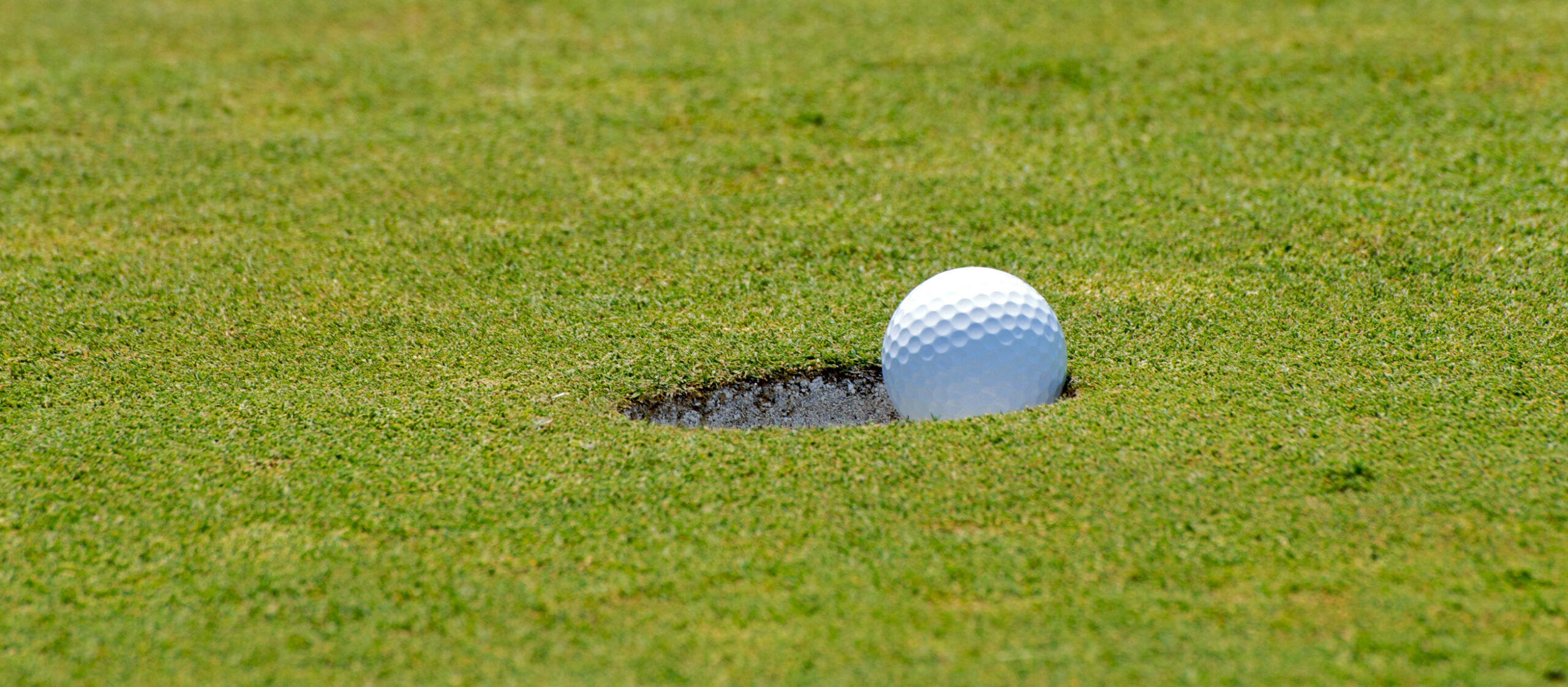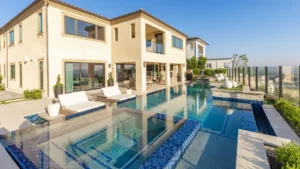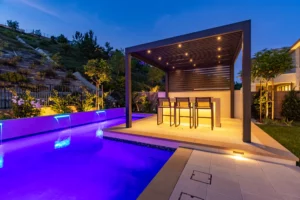Golf enthusiasts who attempt to maintain real-grass putting greens at home quickly learn that it’s a challenge that goes far beyond standard landscape care. Between the constant mowing, fertilizing and fine grooming, you basically become a greens keeper, and few people are up to that challenge.
These days, when you factor in possible watering restrictions prompted by drought, it’s easy to see why literally every one of my clients who wants a putting green turns to artificial turf.
Greens can look beautiful and provide an activity that many people enjoy, with widely varying degrees of skill and dedication. It’s a family fun garden, and becomes a destination in the landscape that people can enjoy.
Par Excellance

The fact is, putting greens mean different things to different people. For those who are serious players and want to improve their putting – arguably the most difficult and important aspect of the game – we can go a long way toward creating a realistic playing surface. We can control the speed, the pitch and contours of the green surface, as well as create sand bunkers, and pitching areas.
Course design is its own art form and for those discerning duffers, we hire a professional putting green designer to create the shape, slopes and pin placements that mimic course play.
We also have clients who want a more casual experience where they just knock the ball around for fun, or they have kids and the idea is to create something akin to a miniature golf experience. Some of those projects can be more whimsical. We did one not long ago where you sink the ball in the hole on an upper green and then it’s deposited onto a lower green where you complete the hole.
Every putting green is different, and they can range widely in price based on the quality of the materials and all the grading and sub-grading work that’s necessary.
Artificial Artistry
I’m the first to admit it took me a long time to get on board with artificial turf. I grew up working in our family’s landscaping business that was largely focused on lawns and my entire career has been spent crafting garden spaces that celebrate the plant kingdom. For years, suffice to say I looked askance at “fake grass.” It looked plastic, like green outdoor carpeting, and was completely unacceptable. 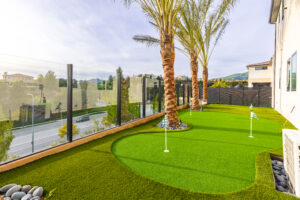
Over the years, we’ve seen the products develop and become much, much more realistic. While you can never completely replicate nature in a manufactured product, there have been dramatic improvements in color and texture. The product I’m using now combines four different shades of green at four different heights. The blades have ridges like real grass and it is surprisingly attractive.
The advantages of artificial turf products, be it on a putting green or any other type of lawn space, is that they don’t require watering, fertilizing and the maintenance is far less.
Not Cool
The biggest downside is that they can be hot. Where real grass will cool a space largely through evaporation, artificial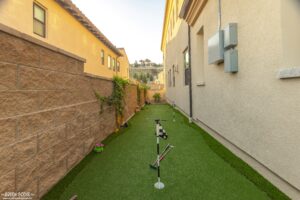 turf heats up. With that in mind, we like to plant shade trees around artificial turf to help manage the temperatures. We also like to set stepping stones in high traffic areas.
turf heats up. With that in mind, we like to plant shade trees around artificial turf to help manage the temperatures. We also like to set stepping stones in high traffic areas.
And, it’s not entirely maintenance free. Every two-to-four years you’ll need to use a device known as a “fluffer” to return the turf to its original appearance.
Club Scenes
Like all aspects of outdoor living, integrating a putting green on your property is, first and foremost, a matter of personal taste and vision.
We’ve found that when a putting green is combined with other amenities, such as a pool, spa, outdoor kitchen, sports court and countless other possibilities, you can create a multi-use recreational environment that appeals to everyone in the family and your friends.
And, who knows, you might just knock a couple strokes off your handicap.

